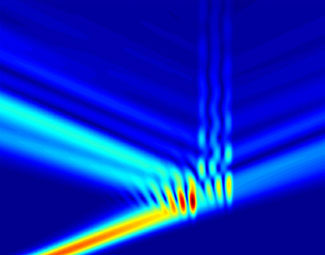Study of electron transport at the nanoscale

Novel predictions for many particles systems in scenarios where their quantum nature is manifested usually hit the headlines of scientific journals because such systems have exotic properties without classical counterpart. In principle, the physical information of these systems can be directly obtained from the many particle wave function solution of the Schrödinger equation. However, from a computational point of view, the direct calculation of the many-particle wave function is only accessible for very few electrons (i.e. simple atoms with two, three electrons). This computational barrier is the reason why many of these systems remain still unexplored and, nowadays, there is an intense research activity on such systems from either experimental or theoretical sides.
The standard approximations to deal, accurately, with many-particle quantum system are based on the ab initio density functional theory or the Hartree-Fock methods. In our work, we propose an alternative approach that is also able to overcome the mentioned computational barrier. Our method is based on studying many-particle system via Bohm trajectories. We prove that Bohm trajectories associated to a system of N electrons can be exactly computed without knowing the many-particle wave-function, but by solving a coupled system of N single-particle (time-dependent) Schrödinger equations. The relevant point of our proposal is that such a coupled system is numerically accessible for hundreds of electrons. The time to compute the trajectories using our algorithms grows as a power of N, whereas an exact solution of the many-particle Schrödinger equation requires a larger time that grows exponentially with N. The work has been published in Physical Review Letters and the numerical computations that support our conclusions have been done with the support of the "Servei d'Informàtica Distribuïda del campus de Sabadell".
In particular, we have used the algorithm for the computation of the transport properties of systems of many electrons with exchange and Coulomb interactions. The algorithm is able to accurately compute the static, dynamic and noise characteristics of state-of-the-art field effect quantum transistors that will be available in next future. In general, our algorithm can also be successfully implemented to study other many-particle quantum systems which are of interest for other disciplines such as solid-state, quantum-optics, physical-chemistry, etc.
References
Oriols, X, "Quantum-trajectory approach to time-dependent transport in mesoscopic systems with electron-electron interactions", PHYSICAL REVIEW LETTERS, 98: 066803 FEB 9 (2007)


